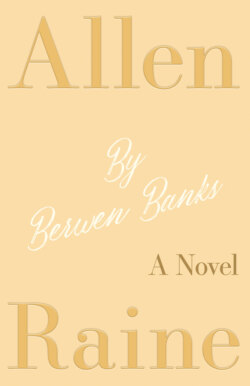Читать книгу By Berwen Banks - Allen Raine - Страница 6
На сайте Литреса книга снята с продажи.
ANNE ADALISA
PUDDICOMBE By Daniel Lleufer Thomas
ОглавлениеMrs. Anne Adalisa Beynon Puddicombe, writing under the pseudonym of Allen Raine (1836-1908), novelist, born on 6 Oct. 1836 in Bridge Street, Newcastle-Emlyn, was the eldest child in the family of two sons and two daughters of Benjamin Evans, solicitor of that town, by his wife Letitia Grace, daughter of Thomas Morgan, surgeon of the same place.
The father was a grandson of the Rev. David Davis (1745–1827) of Castell Howel, and the mother a granddaughter of Daniel Rowlands (1713–1790)
After attending a school at Carmarthen for a short time she was educated first (1849–51) at Cheltenham with the family of Henry Solly, unitarian minister, and from 1851 till 1856 (with her sister) at Southfields, near Wimbledon. She learnt French and Italian and excelled in music, though she was past forty when she learned the violin.
At Cheltenham and Southfields she saw many literary people, including Dickens and George Eliot. The next sixteen years she spent mainly at home in Wales, where her colloquial knowledge of Welsh was sufficient to gain her the intimacy of the inhabitants, and she acquired a minute knowledge of botany.
On 10 April 1872 she was married at Penbryn church, Cardiganshire, to Beynon Puddicombe, foreign correspondent at Smith Payne's Bank, London. For eight years they lived at Elgin Villas, Addiscombe, near Croydon, where Mrs. Puddicombe suffered almost continuous ill-health. They next resided at Winchmore Hill, Middlesex. Her husband became mentally afflicted in February 1900, and she removed with him to Bronmor, Traethsaith, in the parish of Penbryn, which had previously been their summer residence. Here he died on 29 May 1906, and here also she succumbed to cancer on 21 June 1908, being buried by the side of her husband in Penbryn churchyard. There was no issue of the marriage.
From youth Miss Evans showed a faculty for story-telling, and the influence of the Sollys and their circle helped to develop her literary instincts. At home a few sympathetic friends of like tastes joined her in bringing out a short-lived local periodical, Home Sunshine (printed at Newcastle-Emlyn). It was not however till 1894 that she took seriously to writing fiction. At the National Eisteddfod held that year at Carnarvon she divided with another the prize for a serial story descriptive of Welsh life. Her story, Ynysoer, dealing with the life of the fishing population of an imaginary island off the Cardiganshire coast, was published serially in the North Wales Observer but was not issued in book form. By June 1896 she completed a more ambitious work, which after being rejected (under the title of Mifanwy) by six publishing houses (see letter of Mr. A. M. Burghbs in Daily News, 24 July 1908) was published in August 1897, under the title A Welsh Singer. By Allen Raine.
Her pseudonym was suggested to her in a dream. Like most of her subsequent works A Welsh Singer is a simple love-story; the chief characters are peasants and sea-faring folk of the primitive district around the fishing village of Traethsaith. Despite its crudities it caught the public ear. She dramatised the novel, but it was only acted for copyright purposes. Thenceforth Mrs. Puddicombe turned out book after book in rapid succession. Her haste left her no opportunity of improving her style or strengthening her power of characterisation, but she fully sustained her first popularity mainly owing to her idealisation of Welsh life, to the prim, simple and even child-like dialogue of characters in such faulty English as the uncritical might assume Cardiganshire fishermen to speak, and also to the imaginative or romantic element which she introduces into nearly all her stories.
All her works have been re-issued and their total sales (outside America), it is stated, exceed two million copies. An Allen Raine Birthday Book appeared in 1907.
A Biography from
Dictionary of National Biography, 1912 supplement
